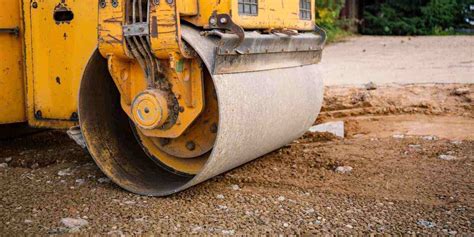excavation compaction Learn about soil compaction, its types, methods, and effects on soil types and construction projects. Find out how to identify and classify soil, and how to achieve optimal density and moisture content. Find plant hire equipment for your construction projects at Travis Perkins. Choose from dumpers, telehandlers, excavators, mini excavators, forklifts, and more. Enter your postcode and collection branch to see availability and prices.
0 · What is Earthwork in Construction?
1 · What Are Earthworks In Construction
2 · How to Compact Soil After Excavation: Your Step
3 · Excavation and Compaction; how they A
Our fleet of lorries and vans offer a fast and efficient delivery and collection service. Whatever your hire needs, whether you are a tradesman, building contractor or domestic DIYer, we will guide you to ensure you are getting the right plant hire you need . See more

What is Earthwork in Construction?
Compaction after excavation is the process of pressing down loosened soil to .Compaction must take place during a fill operation to increase the density of the soil material being placed. Another common breakdown in excavation work is bulk excavation and trench excavation. Swell and shrinkage are two important, and often misunderstood, terms. Compaction after excavation is the process of pressing down loosened soil to eliminate air pockets and increase soil density. This ensures that the ground can support structures and prevents future issues like settling, erosion, or water pooling.Learn about soil compaction, its types, methods, and effects on soil types and construction projects. Find out how to identify and classify soil, and how to achieve optimal density and moisture content.
Learn about the earthwork operations and requirements for roadway construction projects in California. Find out how to prepare, inspect, and pay for excavation, backfill, embankment, compaction, and other earthwork activities.Learn the sequence, procedure and quality checks for excavation and backfilling of soil in construction. Find out the materials, tools, drawings and guidelines for earthwork in foundation and trench construction. In this article we’ll cover how to calculate cubic yards of excavation and backfill, soil types, excavation equipment, soil testing, compaction, swell factor, the difference between excavating and trenching, and when shoring or trench supports are required.
Learn how to choose the right compaction equipment for different soil types and job sizes. Find out how to improve safety and efficiency with remote control, low emissions and low-vibration. Soil compaction is a vital step in building construction, providing a stable foundation for structures. By following proper preparation, using appropriate compaction methods and equipment, and conducting regular monitoring .Soil compaction is an essential step for increasing soil density, eliminating air pockets and maximizing ground load-bearing capacity. The compaction process must be tailored to the particular characteristics of each soil type – such as dirt, clay, sand or gravel.Learn how to plan, execute and control excavation work on construction projects. Find out about erosion and sedimentation control, clearing and grubbing, site and building demolition, earthwork excavation and compaction, rock excavation, water effects and more.
Compaction must take place during a fill operation to increase the density of the soil material being placed. Another common breakdown in excavation work is bulk excavation and trench excavation. Swell and shrinkage are two important, and often misunderstood, terms. Compaction after excavation is the process of pressing down loosened soil to eliminate air pockets and increase soil density. This ensures that the ground can support structures and prevents future issues like settling, erosion, or water pooling.Learn about soil compaction, its types, methods, and effects on soil types and construction projects. Find out how to identify and classify soil, and how to achieve optimal density and moisture content.
Learn about the earthwork operations and requirements for roadway construction projects in California. Find out how to prepare, inspect, and pay for excavation, backfill, embankment, compaction, and other earthwork activities.Learn the sequence, procedure and quality checks for excavation and backfilling of soil in construction. Find out the materials, tools, drawings and guidelines for earthwork in foundation and trench construction.
In this article we’ll cover how to calculate cubic yards of excavation and backfill, soil types, excavation equipment, soil testing, compaction, swell factor, the difference between excavating and trenching, and when shoring or trench supports are required.
Learn how to choose the right compaction equipment for different soil types and job sizes. Find out how to improve safety and efficiency with remote control, low emissions and low-vibration.

Soil compaction is a vital step in building construction, providing a stable foundation for structures. By following proper preparation, using appropriate compaction methods and equipment, and conducting regular monitoring .
Soil compaction is an essential step for increasing soil density, eliminating air pockets and maximizing ground load-bearing capacity. The compaction process must be tailored to the particular characteristics of each soil type – such as dirt, clay, sand or gravel.
What Are Earthworks In Construction

love wart rocker bmx mini bmx gold digger
At IC Mini Digger and Hire, we are able to supply micro excavators, along with other domestically suited plant and equipment, at your convenience in the Kent, Medway & Maidstone areas.
excavation compaction|Excavation and Compaction; how they A